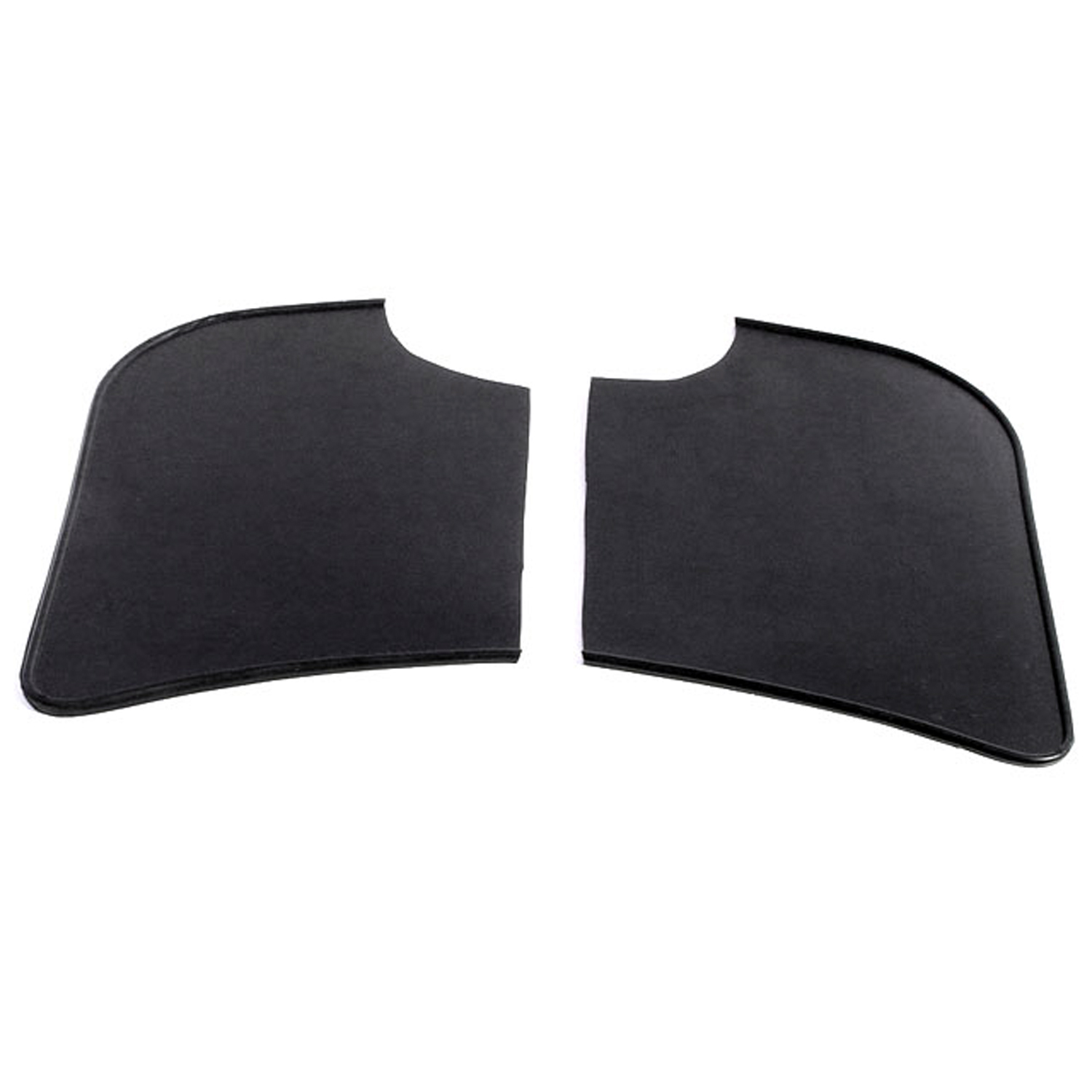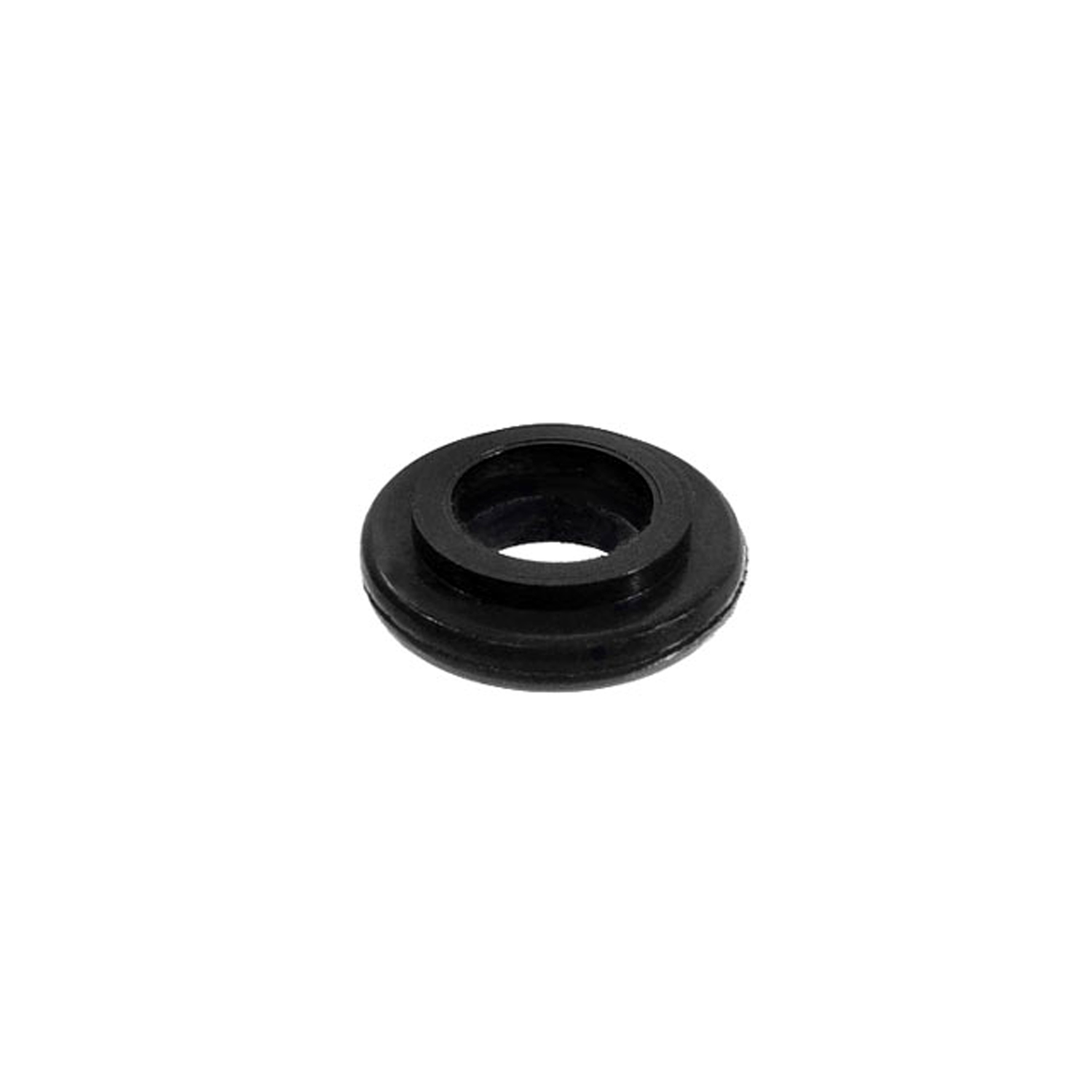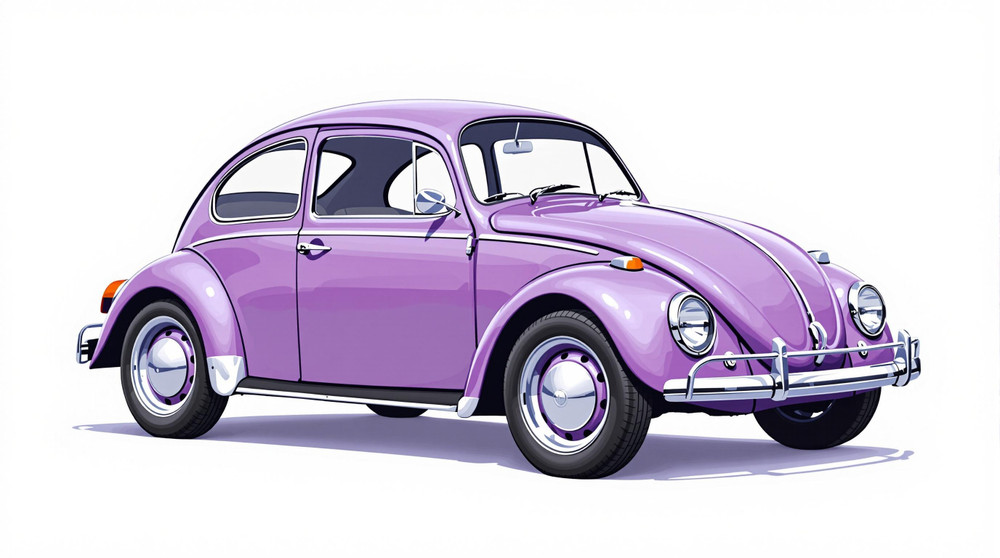Image of 1968 Volkswagen Beetle, Note: These illustrations use artistic license and may differ from actual historical models.
Performance Metrics
Fundamental Metrics
Emotional Appeal
MMP Rating
| Engine Specifications | |
|---|---|
| Engine: | 1.5L H4 |
| Displacement: | 1493 cc |
| Horsepower: | 53 hp @ 4200 rpm |
| Torque: | 78 lb-ft @ 2000 rpm |
| Compression Ratio: | 7.5:1 |
| Ignition System: | Breaker Point Ignition System |
| Cooling System: | Air-cooled |
| Performance Specifications | |
| 0-60 Time: | 20 seconds |
| 1/4 Mile Time: | Estimated 22 seconds |
| Top Speed: | 81 mph |
| Transmission and Drive | |
| Drive Type: | Rear Wheel Drive |
| Transmission Type: | 4-speed manual |
| Fuel and Efficiency | |
| Fuel System Type: | Carburetor |
| MPG: | 25 mpg |
| Dimensions and Brakes | |
| Brakes: | Front: Disc, Rear: Drum |
| Wheelbase: | 94.5 inches |
| Weight: | 1830 lbs |
Note: Specifications for classic cars are given to the best of our ability, considering the limited and variant data available.
Introduction
The 1968 Volkswagen Beetle is not merely a car; it's an emblem of an era. Born from the innovative vision of Ferdinand Porsche and the economic needs of pre-war Germany, the Beetle—or 'Bug' as affectionately known in the United States—became a symbol of automotive reliability and simplicity. Its rounded silhouette is instantly recognizable, and its air-cooled rear engine hums a tune familiar to car enthusiasts worldwide. A unique fact about this iconic machine is that it was the first car to reach a production milestone of 20 million units, making it one of the best-selling cars in history.
Design and Innovation
With its distinctive curved lines and prominent fenders, the 1968 Volkswagen Beetle's exterior styling is both charming and functional. The interior reflects a no-frills approach, yet exudes a timeless character with its metal dashboard and simple instrumentation. The quality of materials, though not luxurious, was durable and designed to stand the test of time. Technological features were modest by today's standards but were revolutionary for its time, including an efficient air-cooling system for the engine. Color options ranged from vibrant hues to more subdued tones, with Zenith Blue and Savannah Beige being popular choices among aficionados. The most iconic body style remains the two-door sedan, which captured hearts with its practicality and unique appearance.
Historical Significance
The 1968 Volkswagen Beetle carved its niche not by being the fastest or most luxurious car but by being accessible and dependable. It democratized mobility for many during the post-war period and became a cultural icon in the process. Its design philosophy influenced numerous compact cars that followed, emphasizing efficiency over excess.
Performance and Handling
The '68 Beetle wasn't known for its speed, with a modest top speed around 80 mph. Acceleration from 0-60 mph took about 23 seconds—a leisurely pace by modern standards. However, handling was where this car shone; its lightweight body and independent suspension allowed it to navigate through bumps and windy roads with surprising grace. Driving a Beetle was an experience unto itself—the distinctive engine sound, the unique feel of the ride, and the simple joy of cruising in a piece of automotive history.
Ownership Experience
The Volkswagen Beetle was many things to many people: a daily driver for some, a show car for others, and even a racing vehicle for enthusiasts looking to push its limits. Its maintenance was straightforward enough for the average owner to handle, thanks to an abundance of parts and a supportive community of fellow Bug lovers.
Fun Facts
Did you know that some Beetles were turned into aquatic cars? Or that celebrities like John Lennon owned one? The Beetle held records for sales longevity until it was surpassed by models like the Toyota Corolla. Despite criticisms over time regarding performance or safety compared to modern vehicles, the Beetle has remained beloved by many.
Collector's Information
Today, the value range for a well-maintained 1968 Volkswagen Beetle can vary greatly depending on condition, originality, and history. While exact production numbers are hard to pin down due to global manufacturing, it's estimated that several million '68 models were produced. As for appreciation value, well-preserved examples have seen steady increases over time due to their iconic status.
Conclusion
The 1968 Volkswagen Beetle stands as more than just a car; it's a testament to design efficiency and cultural impact. Whether you're an avid collector or simply someone who appreciates classic automotive charm, the Beetle continues to captivate hearts around the world long after it first rolled off the assembly line.
1968 Volkswagen Beetle Catalog of Parts
 1968 Volkswagen Beetle Gravel Shields. Molded flat without metal backing plates-FS 40Gravel Shields. Molded flat without metal backing plates. Apply with contact cement. 7-5/8" long X 5-5/8" wide at top. Pair
1968 Volkswagen Beetle Gravel Shields. Molded flat without metal backing plates-FS 40Gravel Shields. Molded flat without metal backing plates. Apply with contact cement. 7-5/8" long X 5-5/8" wide at top. Pair 1968 Volkswagen Beetle Oil Cooler Seal. 7/16" I.D., 7/8" O.D. Each-RP 8-BOil Cooler Seal. 7/16" I.D., 7/8" O.D. Each
1968 Volkswagen Beetle Oil Cooler Seal. 7/16" I.D., 7/8" O.D. Each-RP 8-BOil Cooler Seal. 7/16" I.D., 7/8" O.D. EachWhy Choose Metro?
For over 100 years, Metro Moulded Parts has been the pinnacle of quality in classic car restoration parts. Our commitment to precision and authenticity in every component ensures a perfect fit and an OEM-level appearance.
- Expert Craftsmanship & Quality: Each part is a testament to our dedication to reliability and perfection, crafted from original designs and thoroughly tested.
- Advanced Technology: We use cutting-edge techniques to create flawless, long-lasting parts that surpass others in performance.
- SuperSoft Sponge – The Ultimate Door Seal: Not only are our door seals 30% softer than competitors', but they're also guaranteed to never leak. They effectively reduce wind and road noise, enhancing your classic car's comfort and driving experience.
- Proudly American: Our parts are a product of American craftsmanship, made in the USA with a spirit of excellence and heritage.
- Unrivaled Warranty: We back our products with a 30-year industry-leading warranty, a testament to our confidence in their quality.
Join us in preserving the legacy of classic cars with parts that are crafted for perfection, not just made.

